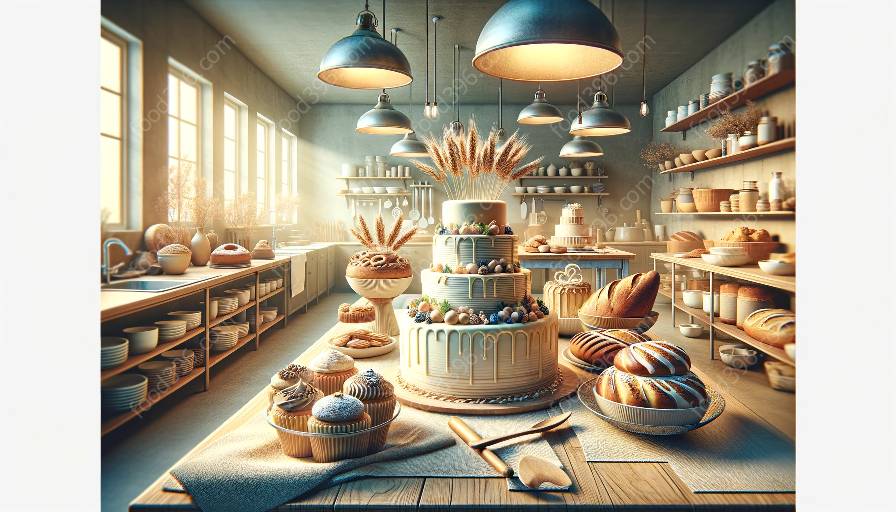Gluten-free baking presents unique challenges, but with the right knowledge of baking science & technology, you can overcome common issues and create delicious gluten-free treats. In this comprehensive guide, we explore troubleshooting tips and techniques specific to gluten-free baking.
Understanding Gluten-Free Baking
Gluten is a protein found in wheat, barley, and rye that provides essential structure and elasticity in traditional baking. However, in gluten-free baking, these proteins are absent, leading to different baking behaviors and potential issues.
Common Issues in Gluten-Free Baking
- Density: Gluten-free baked goods often have a dense texture due to the lack of gluten's binding properties. This can result in heavy, brick-like loaves of bread or cakes.
- Crumbly Texture: The absence of gluten can lead to a crumbly and fragile texture in baked goods, making it challenging to achieve a cohesive and moist crumb.
- Flat or Sunken Baked Goods: Without gluten to provide structure, gluten-free treats may fail to rise properly and end up flat or sunken in the middle.
- Grittiness: Some gluten-free flours, especially those made from rice or almond, can impart a gritty mouthfeel to baked goods, affecting their overall quality.
- Unpleasant Flavor: Certain gluten-free ingredients or flours may contribute off-flavors or bitterness to baked goods, resulting in an unpleasant taste.
Applying Baking Science & Technology to Troubleshoot Gluten-Free Baking
Understanding the principles of baking science & technology is essential for troubleshooting common issues in gluten-free baking. By utilizing the following techniques, you can address the challenges and achieve successful results:
Flour Blending:
Gluten-free flour blends: Mixing different types of gluten-free flours and starches can help replicate the structure and texture provided by gluten. For example, combining rice flour, tapioca flour, and cornstarch can create a balanced blend suitable for various baked goods.
Hydration Management:
Adjusting liquid content: Gluten-free flours tend to absorb more liquid than traditional wheat flour. By adjusting the hydration level in recipes, you can prevent dry and crumbly textures and instead achieve a moist and tender crumb.
Binding Agents:
Using xanthan gum or guar gum: Incorporating these binding agents into gluten-free batters and doughs can mimic the structure-building properties of gluten, preventing crumbling and improving the texture of the final product.
Leavening Techniques:
Utilizing additional leavening agents: To combat flat or sunken baked goods, consider increasing the amount of baking powder or soda to promote proper rise and aeration in gluten-free batters.
Flavor Enhancement:
Exploring alternative flavors: Experiment with natural flavor enhancers such as pure vanilla extract, citrus zest, or spices to overcome any off-flavors associated with certain gluten-free ingredients or flours.
Conclusion
By effectively troubleshooting common issues in gluten-free baking, you can master the art of creating delectable gluten-free treats that rival their traditional counterparts. Using the principles of baking science & technology, along with specific techniques tailored to gluten-free baking, you can ensure consistent success and delightful results in your gluten-free culinary endeavors.

